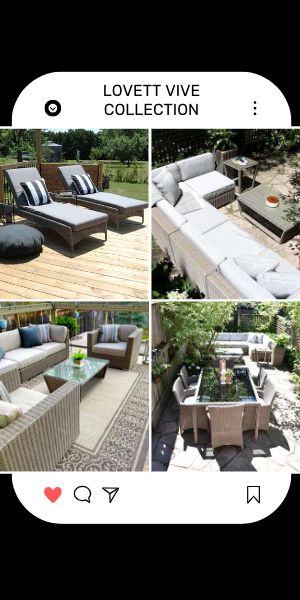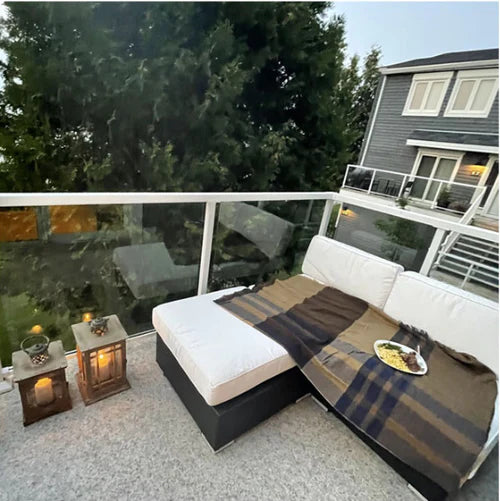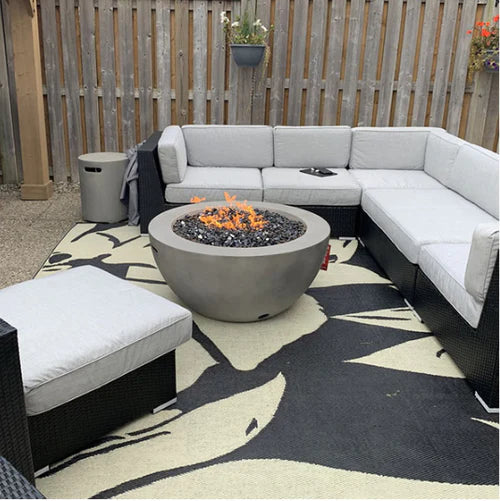Creating a sustainable and eco-friendly outdoor space is becoming increasingly important in our efforts to protect the environment and live more responsibly. As our understanding of sustainability grows, so does our desire to extend eco-conscious practices beyond the confines of our homes and into our outdoor environments. A sustainable outdoor space not only contributes to the preservation of the natural world but also provides a tranquil and healthy retreat for us to enjoy. In this article, we will explore the key principles and practices of sustainable design, green landscaping, and eco-friendly outdoor living. By incorporating concepts such as reduce, reuse, and recycle, utilizing energy and water-efficient technologies, harnessing renewable resources like solar energy, practicing rainwater harvesting and composting, and embracing native plants and natural materials, we can transform our outdoor spaces into harmonious havens that promote both environmental sustainability and personal well-being. Join us on this journey as we discover the endless possibilities of sustainable design, and learn how to create an outdoor space that is not only beautiful and inviting but also aligned with our eco-conscious values.
Understanding Sustainability for Outdoor Spaces
Definition of sustainability and its relevance to outdoor spaces
Sustainability refers to the practice of meeting our present needs without compromising the ability of future generations to meet their own needs. When it comes to outdoor spaces, sustainability involves adopting eco-friendly practices and utilizing resources in a responsible manner to minimize negative environmental impacts. It encompasses a holistic approach that considers the long-term well-being of the environment, society, and economy.
Creating a sustainable outdoor space means making conscious choices to minimize our ecological footprint and promote a healthier planet. It involves designing, constructing, and maintaining our outdoor areas in a way that respects and preserves the natural environment.
Benefits of creating a sustainable outdoor space
There are numerous benefits to creating a sustainable outdoor space. Firstly, it allows us to minimize our impact on the environment. By incorporating eco-friendly practices such as reducing waste, reusing materials, and recycling, we can significantly reduce the amount of waste that ends up in landfills, and reduce our carbon footprints. Check out additional ways to reduce your carbon footprint here!
Secondly, sustainable outdoor spaces contribute to the overall health and well-being of individuals and communities. By utilizing energy-efficient and water-efficient technologies, we can reduce our energy and water consumption, resulting in lower utility bills and a reduced carbon footprint. Additionally, green landscaping and the use of native plants not only enhance the beauty of outdoor spaces but also provide habitats for local wildlife and promote biodiversity.
Key principles of sustainable design
Sustainable design is an essential aspect of creating eco-friendly outdoor spaces. It involves considering the entire lifecycle of the outdoor area, from the materials used in construction to the ongoing maintenance and usage.
One key principle of sustainable design is the use of natural materials and renewable resources. Opting for materials like reclaimed wood, bamboo, or recycled plastic helps reduce the demand for new resources and minimizes environmental harm.
Energy-efficient technologies are another crucial aspect of sustainable design. Incorporating solar energy systems, such as solar panels or solar-powered outdoor lighting, can reduce reliance on non-renewable energy sources and lower energy costs. Additionally, using energy-efficient appliances and lighting fixtures further reduces energy consumption.
Water efficiency is also vital in sustainable outdoor spaces. Implementing techniques such as rainwater harvesting, which involves collecting and reusing rainwater for irrigation purposes, can help conserve water resources. Low-flow irrigation systems and drought-tolerant plantings are other strategies for minimizing water usage.
By embracing these key principles of sustainable design, we can create outdoor spaces that not only align with our eco-conscious values but also promote environmental stewardship and contribute to a greener, more sustainable future.
Designing with Sustainability in Mind
Assessing your outdoor space and identifying areas for improvement
When it comes to creating a sustainable outdoor space, it's crucial to assess your current setup and identify areas that can be improved. Take a walk around your outdoor area and consider aspects such as energy consumption, water usage, waste generation, and the overall environmental impact.
Incorporating eco-friendly practices and materials
To design a sustainable outdoor space, it's important to incorporate eco-friendly practices and materials. One way to achieve this is by using natural and sustainable materials in your outdoor construction and furniture choices. Opt for materials like sustainably sourced wood, recycled plastic, or natural stone, which have minimal environmental impact and can be recycled or reused.
Another aspect to consider is the use of energy-efficient and water-efficient features. Install energy-efficient lighting fixtures and appliances, such as LED lights and solar-powered outdoor lighting. These technologies not only reduce energy consumption but also provide long-term cost savings. Similarly, implement water-efficient features like drip irrigation systems and rain sensors to minimize water wastage and ensure plants receive only the necessary amount of water.
Emphasizing the principles of reuse, reduce, and recycle is another key aspect of sustainable design. Incorporate elements such as recycled materials, upcycled furniture, and repurposed objects in your outdoor space. Additionally, set up recycling bins and composting systems to encourage proper waste management and reduce the amount of waste that goes to landfills.
Sustainable landscaping and gardening
To enhance the sustainability of your outdoor space, focus on sustainable landscaping and gardening practices. Implement green landscaping techniques such as using permeable paving materials to allow water to seep into the ground and reduce stormwater runoff. Create natural habitats for wildlife by incorporating features like bird feeders, birdhouses, and butterfly gardens.
Selecting native plants is another important aspect of sustainable landscaping. Native plants are adapted to the local climate, require less water, and support the local ecosystem. By choosing native plants, you can minimize the need for excessive watering and the use of pesticides or fertilizers.
Additionally, minimizing water usage through practices like xeriscaping (a landscaping method that emphasizes water conservation) and grouping plants with similar water needs together can significantly reduce water consumption in your outdoor space.
By incorporating these sustainable design principles and practices into your outdoor space, you can create a green and environmentally friendly area that not only enhances the beauty of your surroundings but also contributes to a more sustainable future.
Sustainable Outdoor Furniture and Decor
Importance of choosing sustainable outdoor furniture
When creating a sustainable outdoor space, it is essential to consider the furniture and decor choices you make. Outdoor furniture plays a significant role in the overall sustainability of your outdoor area. Choosing sustainable outdoor furniture not only reduces your environmental impact but also ensures the longevity and durability of your furnishings.
Eco-friendly options for outdoor furniture
To make eco-friendly choices for your outdoor furniture, there are several options to consider. Firstly, look for furniture made from recycled or reclaimed materials. These materials, such as recycled plastic or reclaimed wood, help reduce waste and give a new life to existing resources.
Opting for furniture made from renewable resources is another sustainable choice. Bamboo and rattan, for example, are fast-growing plants that can be harvested without causing harm to the environment. By choosing furniture made from these materials, you contribute to the preservation of natural resources.
In addition to the materials used, it is important to select furniture that is durable and low-maintenance. Investing in high-quality outdoor furniture ensures that it will withstand the elements and last for a longer time, reducing the need for frequent replacements. Low-maintenance furniture, such as those made from weather-resistant materials or with protective coatings, minimizes the time and resources required for upkeep.
Sustainable outdoor decor and accessories
In addition to furniture, there are various sustainable options for outdoor decor and accessories. Solar-powered lighting is an excellent choice for eco-conscious outdoor spaces. These lights harness the power of the sun, eliminating the need for electricity and reducing energy consumption. They are also easy to install and provide an ambient and eco-friendly lighting solution.
Implementing rainwater harvesting systems is another sustainable practice for outdoor spaces. Collecting rainwater in barrels or cisterns allows you to reuse it for watering plants or other outdoor activities. This reduces the demand for freshwater and conserves this valuable resource.
Composting is an eco-friendly practice that can be integrated into your outdoor space. By composting yard waste and food scraps, you can reduce waste going to landfills and create nutrient-rich compost for your garden. Composting not only reduces environmental impact but also supports healthy soil and plant growth.
By considering sustainable options for outdoor furniture, decor, and accessories, you can create an outdoor space that is both beautiful and environmentally friendly. These choices contribute to a more sustainable lifestyle and showcase your commitment to eco-conscious living.
Creating a sustainable and eco-friendly outdoor space is becoming increasingly important in our efforts to protect the environment and live more responsibly. As our understanding of sustainability grows, so does our desire to extend eco-conscious practices beyond the confines of our homes and into our outdoor environments. A sustainable outdoor space not only contributes to the preservation of the natural world but also provides a tranquil and healthy retreat for us to enjoy.
Creating a sustainable and eco-friendly outdoor space is within reach for all of us. By embracing the principles and practices outlined in this article, we can transform our outdoor areas into beautiful and environmentally friendly havens. Whether it's through sustainable design choices, green landscaping techniques, or the selection of eco-friendly outdoor furniture and decor, every step towards sustainability counts. Let us embark on this journey together and create outdoor spaces that not only reflect our personal style and taste but also align with our eco-conscious values, contributing to a greener and more sustainable future.
At WickerPark, we are committed to reducing waste and promoting sustainability in outdoor living. We understand the importance of creating eco-friendly outdoor spaces that minimize negative environmental impacts. By eliminating the use of big boxes and excessive plastic packaging, we reduce unnecessary waste and contribute to a greener future. Our patio furniture is thoughtfully designed using sustainable materials such recycled plastic, ensuring minimal environmental harm and the ability to be recycled or reused. With our focus on reducing waste and embracing sustainable practices, we offer customers the opportunity to furnish their outdoor spaces in a way that aligns with their eco-conscious values. Join us in our commitment to creating beautiful and environmentally friendly outdoor spaces that promote sustainability and minimize waste. Together, we can make a positive impact on the environment and enjoy outdoor living responsibly.














